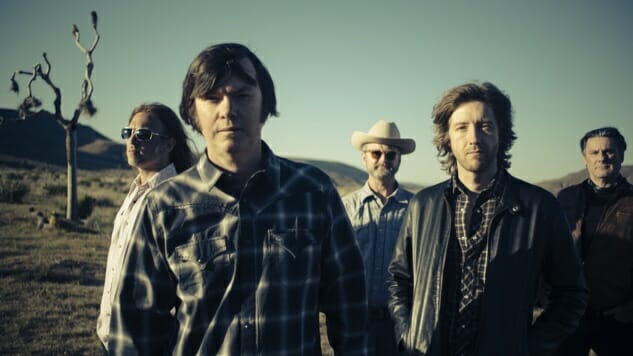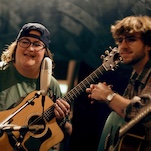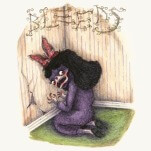Power to the People: Son Volt’s Jay Farrar Gets Back to His Roots
Photo by David McClister
How’s this for symbolism: Son Volt’s highly topical new album Union includes four songs that Jay Farrar recorded while sitting next to Woody Guthrie’s handwritten lyrics to “This Land Is Your Land.”
It’s a fitting juxtaposition: Just as “This Land Is Your Land” was among Guthrie’s more pointed songs, Union is Son Volt’s most overtly political album in nearly 15 years. On a dozen new tunes and a cover, Farrar casts a skeptical eye on late capitalism, addresses the widening gulf of income inequality, imagines Lady Liberty’s tears as she surveys the destruction we’re wreaking upon ourselves, and offers a prescription for unity at a fraught moment in a divided nation.
After dabbling in a stylized electric blues sound on Notes of Blue in 2017, and exploring Bakersfield-style country on Honky Tonk in 2013, Union returns to the rootsy rock ’n’ roll of early Son Volt with a blend of acoustic and electric guitars, organ and harmony vocals sweetening Farrar’s worn-in, authoritative voice. Farrar began writing songs for Union in December 2016, and the sting of the previous month’s presidential election was still fresh. “I was just trying to make sense of things, and turning to pen and paper and music just seemed the natural way to go,” Farrar says. “It was sort of the tradition of the bard: the only thing I could do to feel like I was participating in anything that might help would be to write these songs. Whether or not they helped is anybody’s guess, but they helped me.”
Lest the album become a grim political screed, Farrar included a handful of non-topical songs with a different inspiration: his kids. With a son in college and a daughter in high school, the singer was thinking about sending them off into the world when he wrote “The Reason” and “Holding Your Own.” They’re tender songs, from a quietly proud father who is “seeing them go into adulthood and just thinking about the trials they will face, and hoping they don’t fall and press onward,” Farrar says.
With a batch of songs written to comfort the afflicted (to borrow an old journalism adage), Farrar wanted to shake up his own sense of comfort and record somewhere other than a studio. He and recording engineer Jacob Detering took seven songs on the road, recording basic guitar and vocal tracks for four of them at the Woody Guthrie Center in Tulsa, Oklahoma, and the other three at the Mother Jones Museum in Mount Olive, Illinois. (Mary Harris “Mother” Jones, once denounced in the U.S. Senate as the “grandmother of all agitators,” was a community activist and labor organizer in the late 1800s and early 1900s, most prominently involved with the United Mine Workers.) “There was definitely a field-trip aspect to it,” Farrar says. “It was like, ‘Hey, we’re out of the studio!’”
Farrar and Detering arrived at the Woody Guthrie Center in the morning on a Monday, when the museum is closed to the public. “What better place to record a topical album?” says Deana McCloud, executive director of the Woody Guthrie Center. McCloud expected that Farrar and Detering would record in the center’s intimate theater—“The sound is fantastic,” she says— but when she looked out in the gallery, they had set up in a round display area in the museum’s main gallery, where a case containing the lyrics to “This Land Is Your Land” stands in the center of the floor. “Jay told me, ‘I’m just soaking up Woody’s vibe,’” McCloud says.
-

-

-

-

-

-

-

-

-

-

-

-

-

-

-

-

-

-

-

-

-

-

-

-

-

-

-

-

-

-

-

-

-

-

-

-

-

-

-

-








































